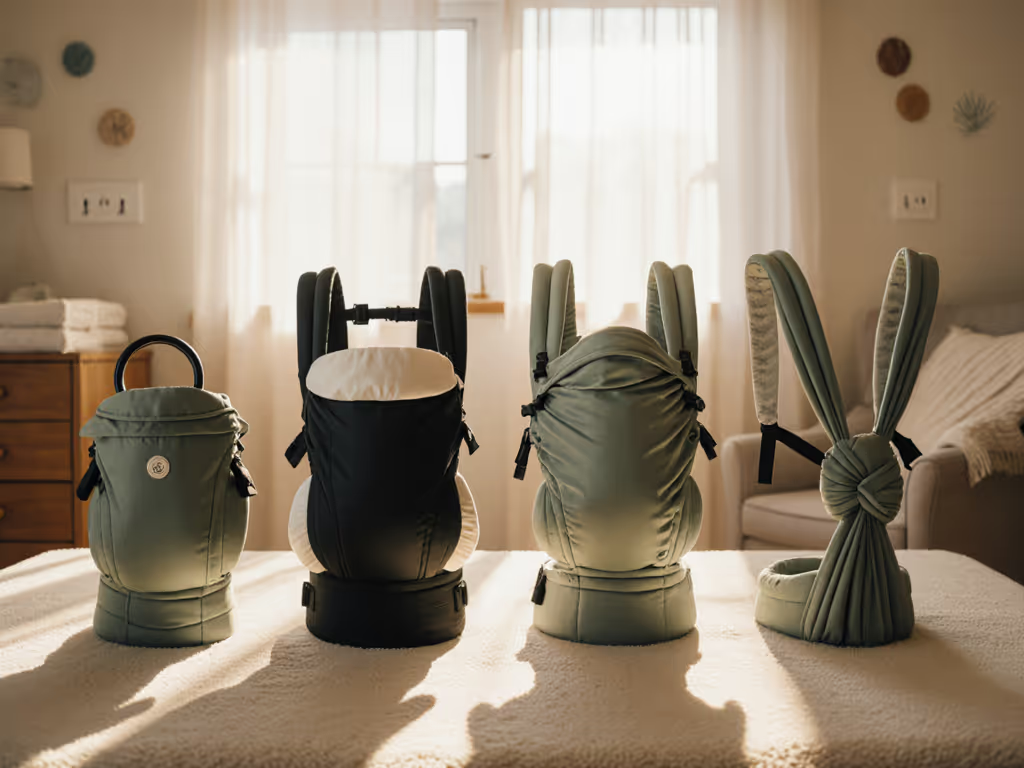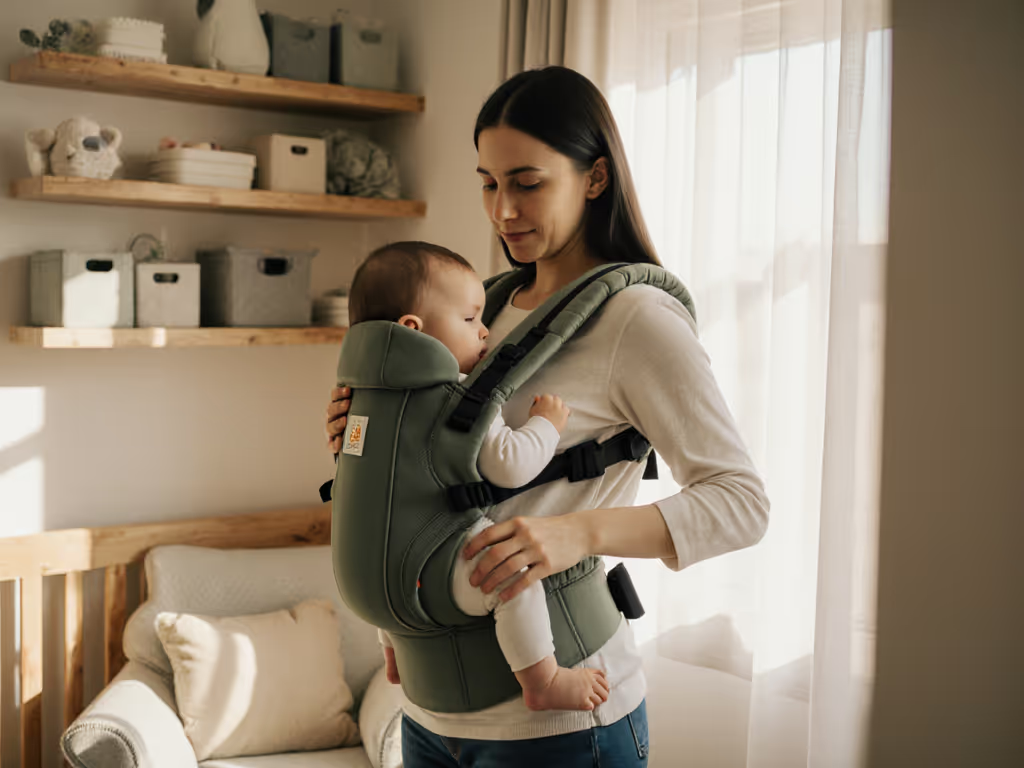
Safest Babywearing Techniques for Confident Caregivers
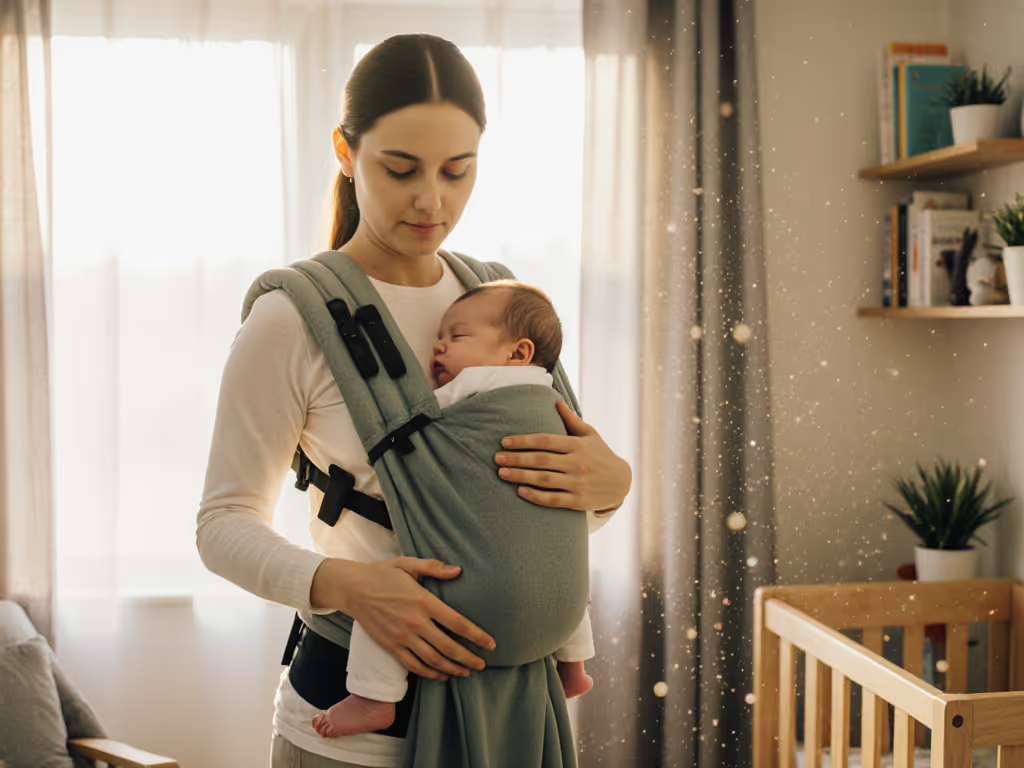
Safest Babywearing Techniques for Confident Caregivers
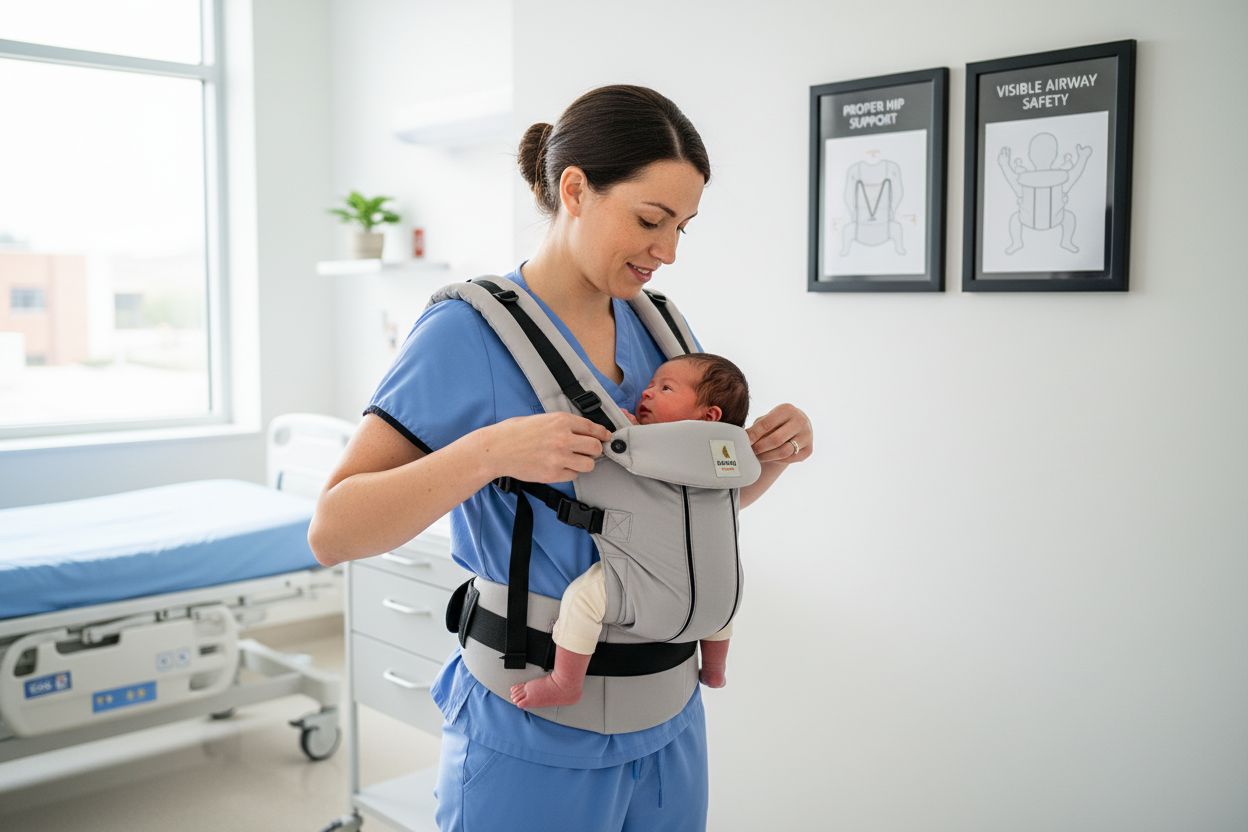
Did you know that newborns spend up to 16 hours a day sleeping, often in their caregiver’s arms? Finding a safe and comfortable way to carry your baby can make a world of difference for both of you. From supporting healthy hip development to keeping your baby’s airway clear, the right carrier and proper positioning help ensure each outing or cuddle is stress-free and secure.
Quick Summary
| Key Point | Explanation |
|---|---|
| 1. Choose age-appropriate carriers | Select carriers that suit your baby's age and developmental stage for the best support and comfort. |
| 2. Ensure proper baby positioning | Position your baby in an 'M' shape with knees elevated to promote healthy hip and spine development. |
| 3. Secure all straps firmly | Check and adjust straps to ensure a snug fit that stabilizes your baby and distributes weight evenly. |
| 4. Monitor airway and visibility continuously | Keep your baby's face visible and unobstructed to ensure they can breathe easily at all times. |
| 5. Prioritize comfort for both baby and wearer | Adjust the carrier to evenly distribute weight and reduce strain, ensuring comfort for both you and your baby. |
Table of Contents
- Step 1: Select The Right Baby Carrier For Safety
- Step 2: Position Baby For Optimal Hip And Neck Support
- Step 3: Secure All Straps And Fastenings Properly
- Step 4: Check Baby's Airway And Visibility Continuously
- Step 5: Test Comfort And Adjust For Both Wearer And Baby
Step 1: Select the Right Baby Carrier for Safety
Choosing the right baby carrier is your first critical step toward safe and comfortable babywearing. Think of this selection as creating a secure, mobile sanctuary for your little one where both movement and protection coexist perfectly.
Start by considering your baby's age and developmental stage. Newborns require different carrier configurations compared to older infants. For the youngest babies, soft structured carriers or stretchy wraps work best because they provide crucial full body support. Read our guide on newborn carrier safety to understand the nuanced support requirements.
The International Hip Dysplasia Institute provides a key recommendation that every parent should know: select carriers with a wide base that supports your baby's thighs and maintains the natural 'M' position. This positioning isn't just comfortable—it's critical for healthy hip development, especially during the first six months when infant joints are most vulnerable.
• Key Safety Checkpoint: Ensure the carrier allows your baby's legs to spread wide around your torso, creating an ergonomic spread squat position that mimics natural sitting.
When examining potential carriers, look for features that guarantee proper neck and head support. Newborns cannot support their heads independently, so the carrier must provide stable containment without restricting breathing. Check that the fabric allows your baby's face to remain visible and unobstructed, with enough room to turn their head naturally.
Weight distribution matters just as much for you as for your baby. A good carrier will spread weight across your back and shoulders, preventing strain and making extended wearing comfortable. Adjustable straps and padded support zones are your friends here.
Remember that no single carrier works perfectly for every parent infant pair. Your body shape, baby's size, and intended use all factor into the ideal selection. When in doubt, try multiple styles and observe how your baby responds to each.
Once you've selected your carrier, practice wearing it without your baby first. Get comfortable with buckles, adjustments, and positioning. Confidence comes from familiarity—and when it comes to babywearing, your comfort directly translates to your baby's safety and happiness.
Here's a comparison of baby carrier types for different age groups:
| Carrier Type | Ideal Age Range | Key Support Features |
|---|---|---|
| Soft Structured Carrier | Newborns<br>Infants | Full body support<br>Adjustable straps |
| Stretchy Wrap | Newborns | Gentle snug fit<br>Neck/head support |
| Woven Wrap | Infants<br>Toddlers | Versatile positions<br>Even weight |
| Meh Dai/Asian-style | Infants<br>Toddlers | Wide base<br>Hip & neck support |
| Backpack Carrier | Older babies<br>Toddlers | Framed seat<br>Padded straps |
Step 2: Position Baby for Optimal Hip and Neck Support
Positioning your baby correctly in a carrier is a nuanced art that balances comfort with critical developmental support. Your goal is creating a secure environment that mimics natural body mechanics while protecting your infant's most vulnerable joints.
Learn more about reducing hip dysplasia risk and understand why precise positioning matters. Orthopedic research reveals that correct babywearing can support hip development comparable to professional medical supports when done right.
The International Hip Dysplasia Institute recommends an inward facing position where your baby's thighs are fully supported and knees remain higher than their buttocks. This 'M' shaped seated position isn't just comfortable—it's a scientifically validated approach to maintaining healthy hip joint development.
• Key Safety Rule: Always ensure your baby's knees are spread wide and elevated slightly above their bottom, creating a natural squat position that supports physiological joint alignment.
Neck support requires equal attention. Newborns cannot independently control their head movement, so your carrier must provide stable containment. Check that your baby's head remains supported yet able to turn naturally. Their face should remain visible and unobstructed, with enough room to breathe comfortably.
Pay close attention to fabric tension and body alignment. Your baby's spine should maintain a gentle curved position similar to their natural resting posture. Avoid carriers that force a straight or overly compressed positioning that could strain developing muscles and joints.
Watch your baby's responses closely. Comfort translates to proper positioning. If they seem restless or attempt to shift frequently, it might indicate the need for slight adjustments in how you've placed them in the carrier.
Practice makes perfect. Take time to learn the subtle art of positioning before attempting longer wearing sessions. Each small adjustment brings you closer to creating a safe mobile sanctuary for your little one.
Step 3: Secure All Straps and Fastenings Properly
Securing your baby carrier is more than just clicking buckles. It's about creating a protective cocoon that keeps your little one safe while allowing you both comfortable movement. Check out our guide for dads on safe babywearing to understand universal safety principles.
Professional baby wearing experts recommend following the T.I.C.K.S. rule a comprehensive approach to ensuring maximum safety. Each letter represents a critical check: Tight connections, In clear view, Close enough to kiss, Keeping chin off chest, and Supported positioning.
• Safety Checkpoint: Perform a thorough visual and physical inspection of all straps before each use. Look for signs of wear tear or loosening that could compromise security.
Start by adjusting shoulder straps to distribute weight evenly across your body. They should feel snug but not restrictive. Your carrier should sit high on your torso allowing your baby to be positioned centrally with their head supported and face visible. Avoid bending at the waist which can create slack and increase fall risks.
Double check all buckles and fastening mechanisms. Some carriers have multiple locking points so take time to understand your specific model. Gently tug on each connection point to confirm they are secure. Remember that fabric can stretch during use so periodic readjustment is important.
Pay special attention to how the carrier sits against your body. A well fitted carrier will feel like an extension of yourself not something awkwardly attached. Your movements should feel natural and controlled with your baby feeling stable and protected.
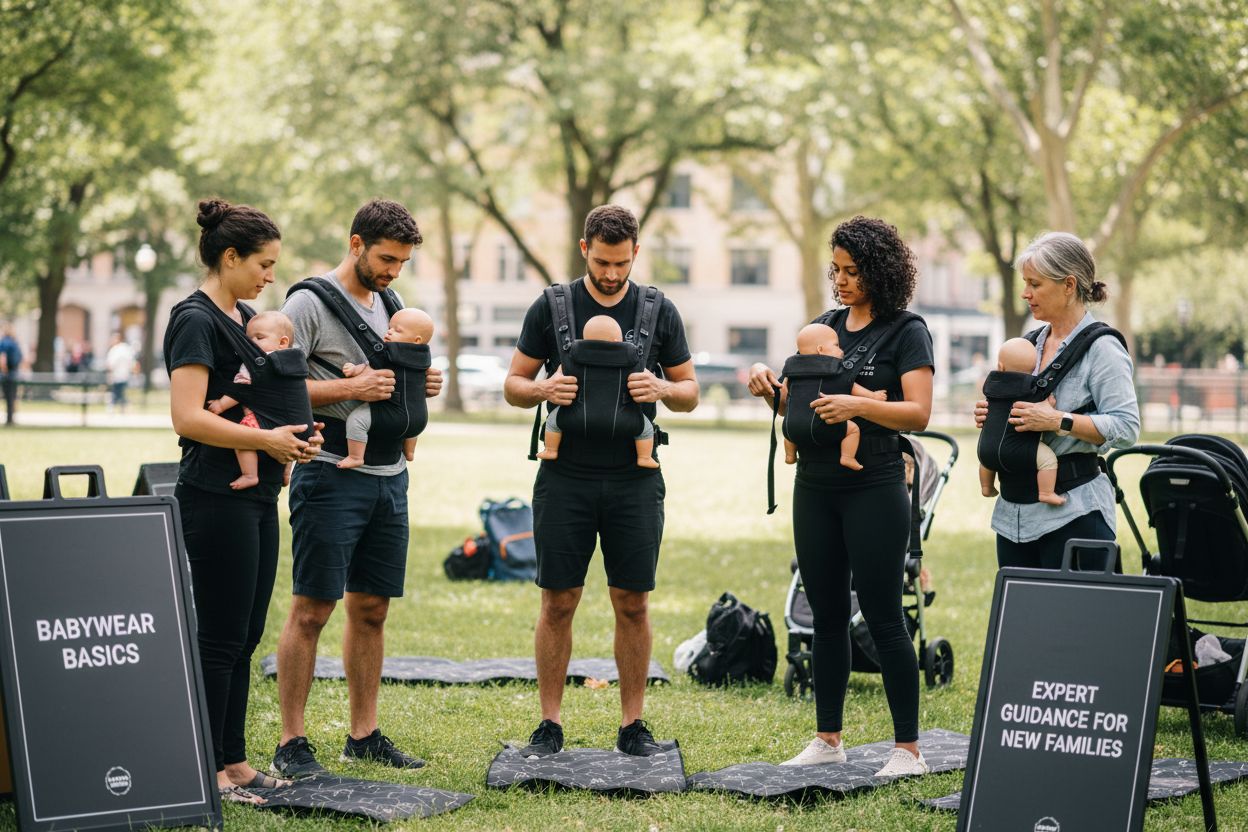
Practice makes perfect. Before wearing your baby spend time adjusting and readjusting the carrier. Get comfortable with its mechanics understand how different settings feel. This preparation builds confidence and ensures safety becomes second nature.
Step 4: Check Baby's Airway and Visibility Continuously
Maintaining your baby's breathing safety is the most critical aspect of babywearing. Every moment requires vigilant awareness about your infant's positioning and airway accessibility. Learn more about safe breathing techniques to understand the nuanced requirements.
Safety guidance emphasizes keeping your baby's face completely visible and unobstructed. Their mouth and nose must remain clear with an upright positioning that prevents chin from dropping toward their chest. This positioning isn't just recommended—it's essential for preventing potential respiratory complications.
• Safety Warning: Never allow fabric or clothing to cover your baby's face. Maintain a clear visual line of sight at all times.
Frequent visual checks become your most important responsibility. Position yourself so you can easily glance down and confirm your baby's face remains uncovered and breathing appears normal. The carrier should allow natural head movement while providing enough support to prevent slumping.
Pay particular attention during movement transitions. Walking climbing or bending can momentarily shift your baby's position. A quick readjustment can prevent potential breathing restrictions. Some carriers feature design elements like mesh panels or strategic openings that enhance airway visibility.
Watch for subtle signs of breathing difficulty. Unusual color changes rapid breathing or unusual sounds warrant immediate repositioning. Trust your parental instincts and always prioritize your infant's respiratory comfort.
Remember that each baby is unique. What works perfectly for one infant might require slight modifications for another. Continuous observation and willingness to make real time adjustments define responsible babywearing.
Step 5: Test Comfort and Adjust for Both Wearer and Baby
Babywearing comfort is a delicate balance between your physical needs and your baby's safety. Your goal is creating a wearing experience that feels natural and supportive for both of you. Explore our comprehensive babywearing guide to understand the nuanced art of comfortable carrying.
Research highlights the critical importance of even weight distribution. Padded shoulder straps and wide hip belts are not just accessories—they are essential tools for reducing strain on your back and shoulders. Think of your carrier as a personalized support system that adapts to your body's unique contours.
• Comfort Checkpoint: Take several minutes to walk around and simulate different movements. A well fitted carrier should feel like an extension of your body not an awkward attachment.
Start with short wearing sessions to understand how the carrier interacts with your physique. Pay attention to pressure points. Do the straps dig into your shoulders? Does the hip belt create uncomfortable friction? These are signals that require immediate adjustment.
Observe your baby's responses closely. Squirming restlessness or frequent repositioning indicate potential discomfort. The carrier should allow your infant to settle naturally without constant readjustment. Look for signs of relaxation—a calm breathing pattern soft muscle tone gentle head resting.
Different body types require different carrier configurations. What works perfectly for one caregiver might need significant modifications for another. Experiment with strap lengths buckle positions and fabric tension until you find your sweet spot.
Remember that comfort is dynamic. Your body changes. Your baby grows. What feels perfect today might need recalibration next month. Continuous learning and adaptation are the hallmarks of confident babywearing.
Confident Babywearing Starts Here: Build Your Secure Routine
Navigating safe babywearing can feel overwhelming, especially when you are worried about hip and neck support or the right carrier fit for your unique routine. This article highlights how even small mistakes in positioning or carrier selection can put your baby's safety at risk. If you are looking to increase your confidence, reduce daily carrying stress, and ensure your baby’s healthy development, you need evidence-based answers that fit both your lifestyle and your baby's needs.
Do not leave your baby's safety to chance. Visit Caregiver Carry to discover comprehensive step-by-step babywearing guides and detailed safety checklists designed for real caregivers. Explore our unbiased carrier reviews and expert-backed advice today. Invest in your peace of mind and make every carry safe—start now with the trusted resources on Caregiver Carry.
Frequently Asked Questions
What are the safest babywearing techniques for keeping my baby secure?
To keep your baby secure, use soft structured carriers or wraps that provide full body support and ensure the 'M' position for hips. Begin by trying out different carriers to find the one that best fits your baby's size and your body shape.
How can I ensure my baby's airway is clear while babywearing?
Always position your baby so their face is visible and unobstructed, with their chin off their chest. Regularly glance down to confirm their breathing is normal, especially during movements like walking or climbing, and adjust as necessary.
What adjustments should I make for both my baby’s comfort and my own?
Adjust the carrier to evenly distribute weight across your back and shoulders, aiming for a snug fit without restriction.
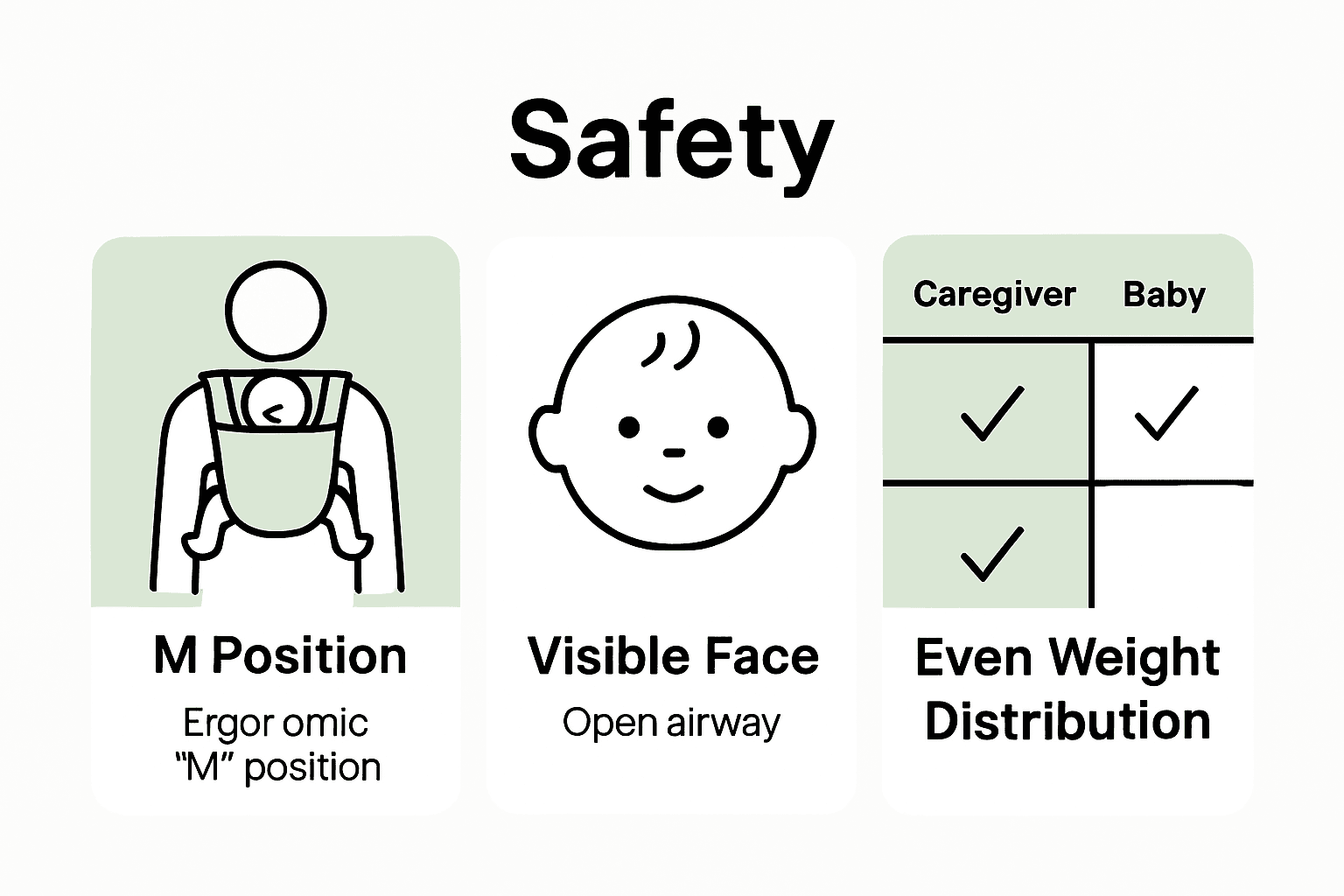 Take a few minutes to walk around and check for pressure points or discomfort; if you notice any, make immediate strap adjustments.
Take a few minutes to walk around and check for pressure points or discomfort; if you notice any, make immediate strap adjustments.
How do I properly secure all straps to ensure my baby's safety?
Secure all straps by first adjusting the shoulder straps for a snug fit across your body. Conduct a thorough visual check of all buckles and fastening mechanisms before each use, ensuring they’re tight and secure to reduce the risk of slipping or loosening during use.
What should I do if my baby seems uncomfortable in the carrier?
If your baby appears uncomfortable or is frequently squirming, revisit their positioning within the carrier and ensure their knees are elevated in the 'M' position. Make incremental adjustments to the carrier, such as adjusting fabric tension or repositioning their legs to enhance comfort immediately.
Why is the 'M' position important for my baby's hip development?
The 'M' position is crucial as it ensures that your baby's thighs are fully supported, with their knees higher than their bottom, promoting healthy hip development. To implement this, select a carrier that allows for this positioning, especially for newborns and young infants.


